cueSports
Exotic Wood

Exotic Hardwood Softwood Pool Cue
Here you may realize info on exotic hardwoods that are accessible for hand snooker and pool cues. every wood is totally different in not solely look however conjointly in feel, weight and density. several ancient plain woods are accessible like African (Gaboon) Ebony furthermore the maximum amount additional patterned woods like Dalbergia retusa, rauwolfia and Turkish Walnut.
Any mixtures of woods are accessible forward that the timber is accessible within the lengths needed. Information on every exotic hardwood is below together with the particular weight and hardness of every species furthermore as different specific comments for every.
Custom Inlay Cues
Craving a clever showstopper? does one suppose one amongst our cues would look higher with bocote rather than cocobolo; inexperienced burl rather than turquoise; metal rather than brass? Any of our current regular cue models will be custom-made with our exotic woods and materials. select one amongst our current McDermott cue models and substitute any of our materials to form your custom cue.
Custom Build-A-Cue
Custom style a cue stick together with your style! simply choose any stain or paint color and select your wrap. many totally different mixtures for your custom-made cue!
All base costs embrace a maple cue together with your alternative of stain color and Irish linen wrap
Comes customary with a black butt plate and joint collars. need different choices.

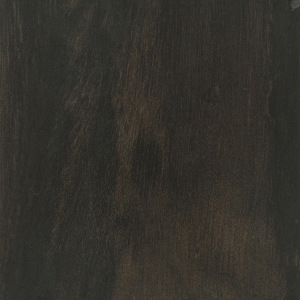
Gabon Ebony
Gabon ebony is definitely the most popular exotic hardwood that is used for decorative cue splices. This wood is very dense and very heavy, the wood polishes to a very smooth finish.
Gabon ebony’s heartwood is jet black with small flecks of light brown/white through the wood, the higher the grade of Gabon ebony the more black the wood with the highest grades of ebony being 95-100% black.
- Details
- Written by: cueSports
- Parent Category: DIY
- Category: Exotic Wood

English Ash ?? (Fraxinus Excelsior)
Over the last 10-15 years English ash has been less commonly used in cue manufacture due to increased felling laws and the demand swaying towards the more straight grained american ash. English ash has a slightly darker colour and is slightly heavier and denser when compared with North American ash.
Like American ash, English ash has an open grain which is what gives the visible chevrons to the shaft.
Weight: 680kg/m3
Modulus of Elasticity: 1,785,000
Janka Hardness: 6580

- Details
- Written by: cueSports
- Parent Category: DIY
- Category: Exotic Wood

BOCOTE
LATIN: CORDIA SPP. ORIGIN: MEXICO THOUGH CENTRAL AMERICA
Bocote is a beautiful decorative exotic wood growing from Mexico through lower Central America. It is a very good alternative to many of the Rosewood species which are now on CITES restriction, as Bocote is not a Rosewood. It has unique grain patterns from straight lines to swirls to bird's eye figure. It is easily workable and contains a high oil content which helps to achieve a high luster in finished products. Bocote is commonly used in wood turning, gunstock, pool cues, musical instruments and furniture.
WOOD TYPE
Exotic hardwood
TEXTURE
Medium uniform texture with natural oily feel
GRAIN PATTERN
Straight or interlocked grain with many pieces showing a decorative figured pattern
HEALTH RISKS
Can trigger allergic sensitivity to those who are allergic to Rosewood species
COLOR
Yellowish-brown body with deep brown to black stripes and swirls

Bocote (Mexican Rosewood)
Cordia spp.
Bocote is also known as Mexican Rosewood, however the wood is no relation to a rosewood. The wood has a random figure and the grain colour is contrasting from yellow to black.
Bocote will darken with age as it is exposed to light. Boote is almost as heavy Gaboon ebony.
- Details
- Written by: cueSports
- Parent Category: DIY
- Category: Exotic Wood

 Amboyna
Amboyna
A rare, exotic hardwood that grows in Southeast Asia and has a fragrant aroma. It can vary in color from yellow to golden brown to red, and is generally considered excellent for both turning and finishing.

Amboyna Burl
Amboyna Burl wood is a very rare wood that is harvested from the dead roots of felled trees, the patterns in the wood appear as the wood dries over time creating a truly stunning patina. Amboyna burl, like most burl woods is very light and not very dense compared with other exotic hardwoods, therefore it is best used sparingly on a cue to ensure the correct balance is achieved.
Amboyna Burl is not a species in it’s own right but is harvested from Narra and Padauk roots, therefore there is no weight or hardness data for this wood.
- Details
- Written by: cueSports
- Parent Category: DIY
- Category: Exotic Wood

 Thuya Burl
Thuya Burl
This beautiful burl comes from Morocco. Reportedly it comes from the root systems of trees which have died a long time ago. It is very difficult to find as the tree tops have disappeared years ago, leaving small depressions in the ground where it is dug to see if a burl is there. It has a characteristic smell and a very fine grain. The color may very from deep reddish to bronze to tan. The black spots may be sparse or more packed together. Even though the tree is a conifer, the wood is very hard and somewhat oily. A favorite turning wood for years.

Thuya Burl
Tetraclinis articulata
Thuya Burl is a favorite wood of many cue makers, the wood is very interesting with eyes and swirls in the grain of the wood. The wood contains natural resins and oils that give the wood a distinct look and means it can polish well..
- Details
- Written by: cueSports
- Parent Category: DIY
- Category: Exotic Wood

 Tulipwood
Tulipwood
Brazilian tulipwood is a classic high-quality wood, it is very dense with a lovely figure. Tulipwood is a stunningly beautiful hardwood which is in short supply. The tree itself is only found in a narrow geographical area, and it’s small enough to be considered a shrub: typically yielding very small and narrow boards.

Brazilian Tulipwood
Dalbergia decipularis
Brazilian Tulipwood is considered as a true rosewood, however it is rare due to the small areas that the wood grows in and the small size of the shrub that it comes from. The colour of Tulipwood will darken with age and exposure to light.
Brazilian Tulipwood is very similar to African Ebony in both weight and hardness, the wood has a nice natural luster and polishes to a nice shine.
- Details
- Written by: cueSports
- Parent Category: DIY
- Category: Exotic Wood

KINGWOOD
LATIN: DALBERGIA CEARENSIS ORIGIN: BRAZIL
Kingwood Is one of the most beautiful of the Rosewood species. The deep purple-brown coloring with darker grain streaks and swirls are unique and the light sap is a very nice contrast. It is extremely strong and dense, but turns and polishes to a high sheen. Because of the small size of the tree it is mostly available in small turning stock sizes.
Kingwood has also been placed on the CITES appendix II listing along with all other Rosewoods (Dalbergia spp.) which restricts the import of this material. We do still have a fair amount of pre-CITES turning stock in our inventory so get it before it's gone!
WOOD TYPE
Exotic hardwood
TEXTURE
Fine uniform texture
GRAIN PATTERN
Straight to interlocked
HEALTH RISKS
Uncommon allergy sensitizer
COLOR
Dark purplish brown with darker brown to black streaks, sap is pale yellow contrasting
 Kingwood
Kingwood
Brazilian Kingwood is a beautiful member of the rosewood family. The unfinished color of the wood usually has a violet hue. This wood can be beautifully finished and is an excellent turning wood. The specific gravity is between .8 and 1.2, making it a very dense wood.

Kingwood
Dalbergia cearensis
Kingwood is a very rare wood with a big contrast in colour, from deep purple colour to almost white grain. Kingwood is one of the heaviest of the rosewood genus, meaning that it nice to hold in the hand and also polishes to a glass-like finish.
- Details
- Written by: cueSports
- Parent Category: DIY
- Category: Exotic Wood

COCOBOLO
LATIN: DALBERGIA RETUSA ORIGIN: CENTRAL AMERICA
After the ban on Brazilian Rosewood (Dalbergia nigra), Cocobolo became the new sweetheart of the Rosewoods. Beloved for the rich, varying colors and swirling grain patterns it has been a favorite for woodturners and luthiers for many years. With the addition of this species to the CITES II appendix the availability is becoming much more difficult. We do have a very good inventory of pre-CITES material that is still for sale. Get some before its all gone!
Below is a video taken by Rocky in 2013, explaining the varying color of Cocobolo.
WOOD TYPE
Exotic hardwood
TEXTURE
Fine, even texture with good luster
GRAIN PATTERN
Straight to interlocked, some pieces are figured
HEALTH RISKS
Common allergen, can cause skin, eye or respiratory irritation
COLOR
Widely varying, from red, orange, gold, brown with streaks of black or purple, sap is a contrasting pale yellow
 Cocobolo
Cocobolo
Some people consider cocobolo to be the classic rosewood. It comes in many shades and colors. It is a rosewood that usually has a fair amount of natural oil in the wood. Mexican cocobolo can also have more or less orange or brown, straight or wavy lines, many lines or few lines. Each piece varies a little.

Cocobolo
Dalbergia retusa
Cocobolo is a highly prized wood with all woodworkers due to the wide range of colours that are present in the wood. Cocoblo is also extremely dense meaning that is hard wearing and will polish to an impressive shine, it is always different in appearance from one piece to another. The heartwood ranges from dark brown to light brown with reds, yellows and purple streaks.
COCOBOLO
LATIN: DALBERGIA RETUSA ORIGIN: CENTRAL AMERICA
After the ban on Brazilian Rosewood (Dalbergia nigra), Cocobolo became the new sweetheart of the Rosewoods. Beloved for the rich, varying colors and swirling grain patterns it has been a favorite for woodturners and luthiers for many years. With the addition of this species to the CITES II appendix the availability is becoming much more difficult. We do have a very good inventory of pre-CITES material that is still for sale. Get some before its all gone!
Below is a video taken by Rocky in 2013, explaining the varying color of Cocobolo.
WOOD TYPE
Exotic hardwood
TEXTURE
Fine, even texture with good luster
GRAIN PATTERN
Straight to interlocked, some pieces are figured
HEALTH RISKS
Common allergen, can cause skin, eye or respiratory irritation
COLOR
Widely varying, from red, orange, gold, brown with streaks of black or purple, sap is a contrasting pale yellow
- Details
- Written by: cueSports
- Parent Category: DIY
- Category: Exotic Wood

SHEET OF RULES OF 8 BALL POOL ***Please note total orders of below ?10.00 will incur a 'low order fee'***
- Details
- Written by: cueSports
- Parent Category: DIY
- Category: Exotic Wood
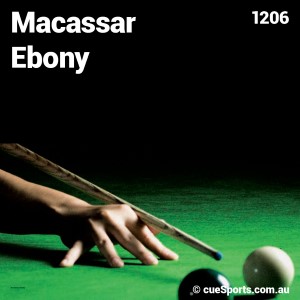

Macassar Ebony
Macassar ebony is rarely seen on many cues due to the high demand and trend for the more plain alternative of Gabon Ebony. Macassar ebony is very striking with hartwood colours ranging from black to light brown in a light streak pattern. Macassar has similar characteristics to Gabon ebony with regards to weight and density.
- Details
- Written by: cueSports
- Parent Category: DIY
- Category: Exotic Wood

CANADIAN MAPLE
LATIN: ACER SACCHARUM ORIGIN: NORTHEASTERN NORTH AMERICA
Hard Maple has a fine, uniform texture, turns well on a lathe, is resistant to abrasion and has no characteristic odor or taste. It is heavy, strong, stiff, hard, and resistant to shock, and it has large shrinkage. The sapwood of maples is commonly white with a slight reddish-brown tinge; the heartwood is light reddish brown, but sometimes is considerably darker. It stains and polishes well, but is intermediate in gluing.
Birdseye Maple as well as Curly and Quilted Maple figure happens in Hard Maple species.
WOOD TYPE
Domestic hardwood
TEXTURE
Fine, even texture
GRAIN PATTERN
Typically straight
HEALTH RISKS
Uncommon for skin and respiratory allergies
COLOR
Nearly white to pale cream, with age color deepens to a light golden color
Canadian Maple ?? (Acer saccharum)
Acer Sacharum (hard maple) is regarded as the king of all the maples, it is much more expensive compared with other maples. All of the maple timber that is used in the my cues is fully kiln dried and then further seasoned for a minimum of 12 months before the shaft is made.
It is a common misconception that maple is completely plain, genuine maple has many characteristics such as a slight grain, chevrons and can even have a quilted effect. Maple, like most woods will darken slightly with age.
North American Maple is a very hard and stiff wood with no noticeable grain compared to ash. Maple is more commonly used in snooker and billiards where the balls are heavier to keep the shaft as stiff as possible on contact with the cue ball.
Weight: 705kg/m3
Modulus of Elasticity: 1,830,000
Janka Hardness: 6450

- Details
- Written by: cueSports
- Parent Category: DIY
- Category: Exotic Wood

American Ash ?? (Fraxinus Americana)
American Ash is by far the most popular wood used in modern day snooker and English pool cues, high quality ash is easily spotted by its straight lines and uniformed chevrons along the cue. The chevrons will be forward facing and run in line with the chamfer on the butt of the cue, however many players will choose to hold the cue with the chamfer facing downwards or prefer to cue looking down the grain of the cue.
Weight: 675kg/m3
Modulus of Elasticity: 1,740,000
Janka Hardness: 5870
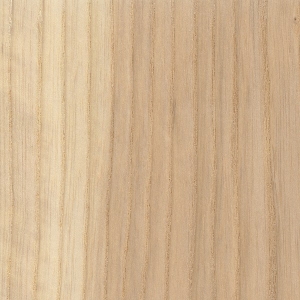
- Details
- Written by: cueSports
- Parent Category: DIY
- Category: Exotic Wood

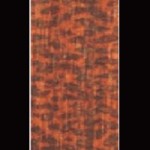 Snakewood
Snakewood
Snakewood is an incredibly beautiful wood which originates mostly in Suriname, South America. The specific gravity is around 1.2, making it one of the worlds hardest woods. The part sold as snakewood is really the heartwood of the larger tree. This wood is usually felled with axes and carried on the backs of hard working natives over streams and through snake infested jungle areas. Each tree felled is monitored, and the government has developed a strict permit process to control harvesting.

Snakewood
Brosimum guianense
Snakewood is among one of the heaviest and hardest woods in the world, it is incredibly dense with a lot of natural oils in the wood. As snakewood is so dense and oily it polishes to a very impressive shine and feels very nice in the hand. The heartwood ranges in colour from deep red to a lighter orange colour, the highest grade of snakewood has a close grain with a uniformed snakeskin pattern.
SNAKEWOOD
LATIN: BROSIMUM GUIANENSE ORIGIN: COASTAL NORTHERN SOUTH AMERICA
Snakewood is the most expensive woods in the world. It only grows along the coastal area in northern South America. The tree is very small and has a high waste factor when cutting. It is dark reddish brown with darker brown to black patches, dinstinguished by a unique snake skin grain pattern. It is typically priced according to the level of figure with very highly figured pieces costing more. Figure is often only visible on one or two sides of a piece.
Snakewood is very heavy and dense, and is very brittle. It does turn very well and finishes with a high sheen. We carry this in small turning stock sizes, knife blanks and fingerboards for musical instruments.
WOOD TYPE
Exotic hardwood
TEXTURE
Fine even texture, high luster
GRAIN PATTERN
Straight, distinguished by light to heavy snake skin pattern
HEALTH RISKS
Uncommon
COLOR
Deep reddish brown with darker contrasting brown or black patches
- Details
- Written by: cueSports
- Parent Category: DIY
- Category: Exotic Wood
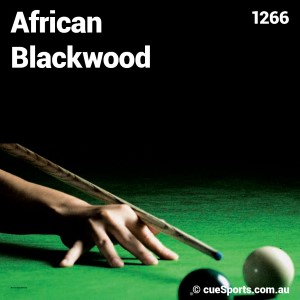
AFRICAN BLACKWOOD
LATIN: DALBERGIA MELANOXYLON ORIGIN: CENTRAL AND SOUTHERN AFRICAN
African Blackwood is an exotic wood native to Central and Southern Africa, and is also known as a good alternative to Ebony. It features a dark black heartwood with minimal grain texture. It is an extremely hard wood, strong and stiff, very stable, with a fine texture. Mainly used for custom pool cues, woodwind instruments, knife handles, walking sticks, and carving. African Blackwood is considered one of the world's finest woods for turning. It polishes very well to a smooth, lustrous finish. The light sapwood is minimal but provides beuatiful contrast to the dark heatwood.
WOOD TYPE
Tropical Hardwood
TEXTURE
Extremely fine and even-textured with good natural luster
GRAIN PATTERN
Usually straightened opaque when finished, but can be variable
HEALTH RISKS
Reactions uncommon, but can include eye, skin and respiratory irritation
COLOR
Often opaque black with little grain, sap is minimal but will be pale whitish-yellow and highly contrasting to the heartwood

African Blackwood
African Blackwood is a rare wood that has been traditionally used for thousands of years, it is considered to be the ??original’ Ebony. Blackwood is actually a species of rosewood (Dalbergia), it is heavier and denser than any kind of ebony, which means that a glass-like finish can be achieved during the polishing process.
African Blackwood is a very dark wood with small light streaks running through the hartwood, both figured and straight grained examples are often seen as well as African Blackwood burls.
- Details
- Written by: cueSports
- Parent Category: DIY
- Category: Exotic Wood
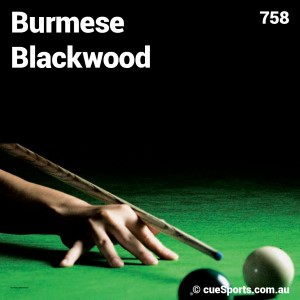

Burmese Blackwood
Dalbergia cultrata
Burmese Blackwood is seldom every used on snooker or UK pool cues as it just isn’t used in this country by wood turners. I import this wood especially from America.
Burmese Blackwood is heavier and denser than ebony and is in the Rosewood genus, the gain is absolutely stunning, almost resembling feathers once rounded to shape. The heartwood ranges from deep black to dark, purple to then olive colour.
- Details
- Written by: cueSports
- Parent Category: DIY
- Category: Exotic Wood

Pear ?? (Pyrus communis)
Pear is the darkest, hardest and heaviest of all the timbers which are used for cue shafts. Pear wood has a deep orange appearance with no noticable grain, it is much closer to the appearance of maple than ash.
Pear wood was first specified on cues by JP Mannock when designing the Anti-Grip cue, this was specified as it would finish to a smoother finish than both ash and maple due to its close grain and dense nature.
Due to it’s lower modulus of elasticity Pear wood is considered to be more ??whippy’ when compared with maple and ash.
Weight: 690kg/m3
Modulus of Elasticity: 1,131,000
Janka Hardness: 7380

- Details
- Written by: cueSports
- Parent Category: DIY
- Category: Exotic Wood


Ziricote
Cordia dodecandra
Ziricote is a very striking hardwood with completely random grain patterns. The Heartwood ranges from an almost green light brown to jet black streaks in areas. The wood has a high natural luster due to its high oil content. It is rarely used in snooker cue manufacture due to it’s rarity but it is well worth considering.
- Details
- Written by: cueSports
- Parent Category: DIY
- Category: Exotic Wood


Birdseye Maple
Acer Saccarum
Birdseye maple has classically been used in top end snooker cues for centuries in both veneers and full splices. The name is due to the figure in the wood that resembles small bird’s eyes, the grain if formed when the maple tree grows in tough climates and cannot grow the buds that it tries to sprout. Many grades of Birdseye maple are available with the exhibition grade being highly figured with lots of eyes in close proximity.
- Details
- Written by: cueSports
- Parent Category: DIY
- Category: Exotic Wood

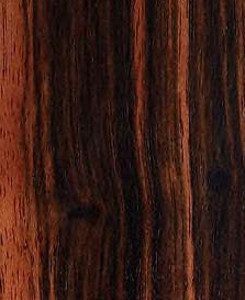
Striped Asian Ebony
Dalbergia-cearensis
Striped Asian Ebony is very rarely used for snooker cues, it is a native wood to Asia that is not actually in the ebony genus. I is named Striped Asian Ebony as it looks and feels like ebony. The heartwood is black with streaks of red through the wood.
- Details
- Written by: cueSports
- Parent Category: DIY
- Category: Exotic Wood
